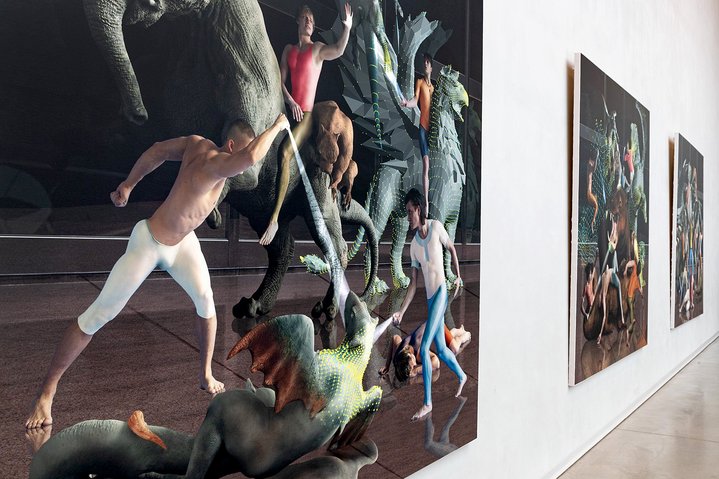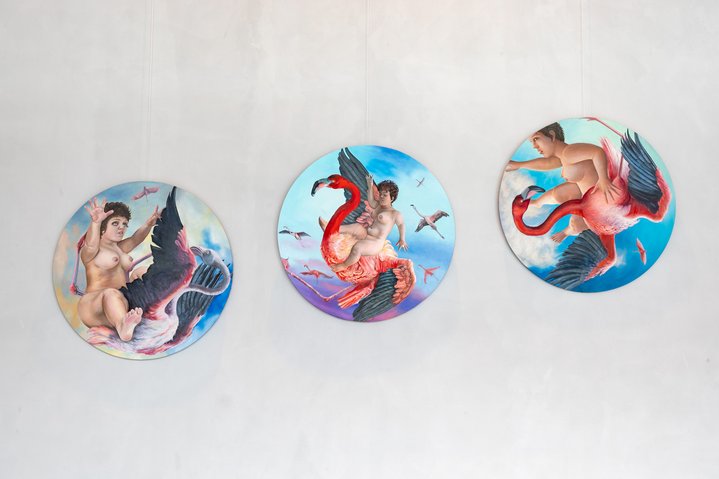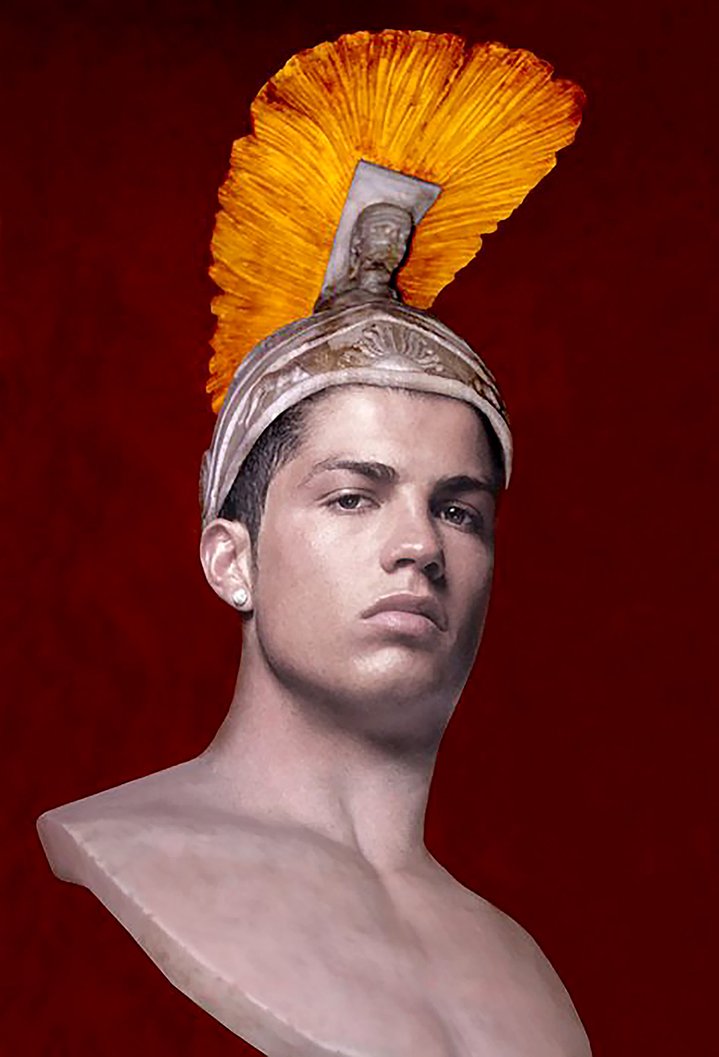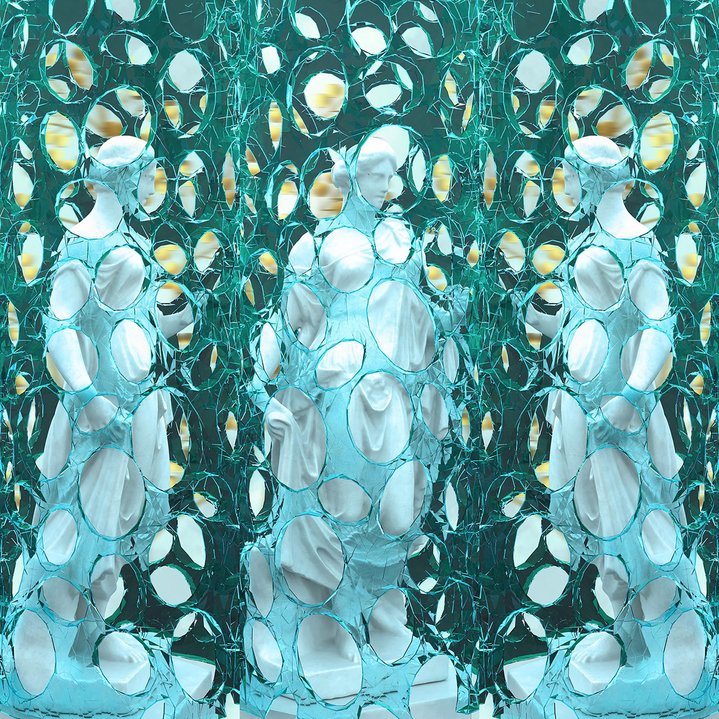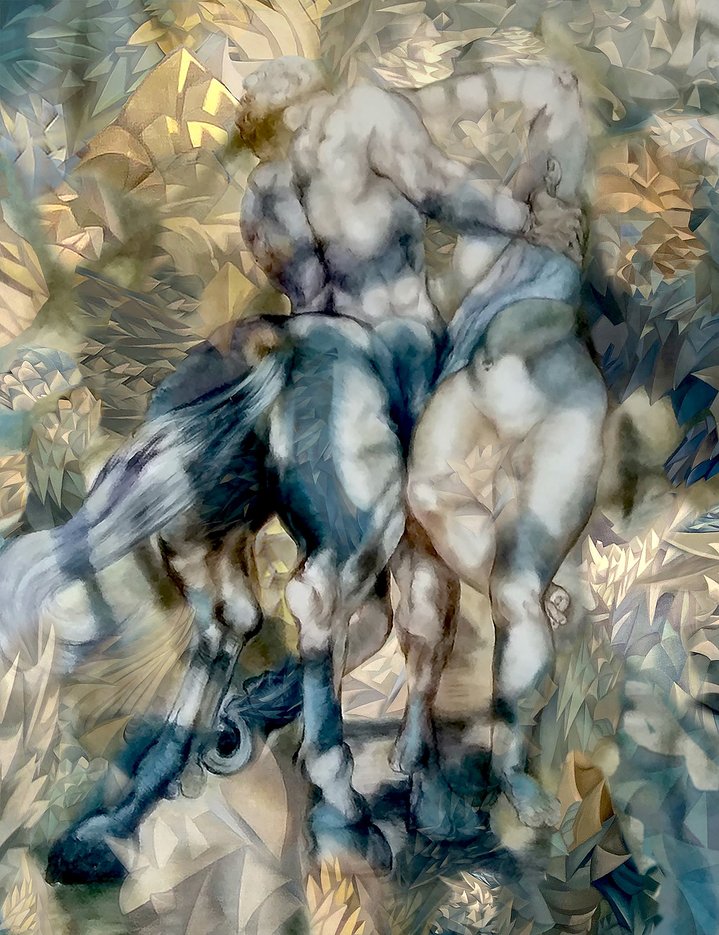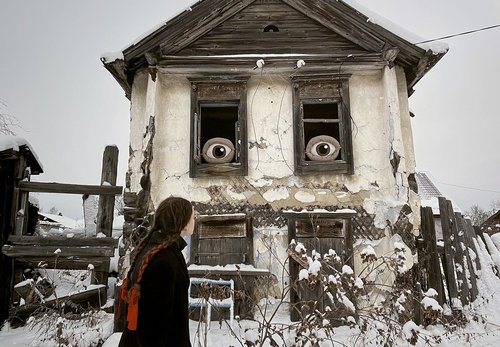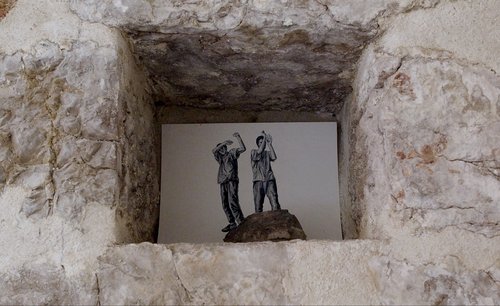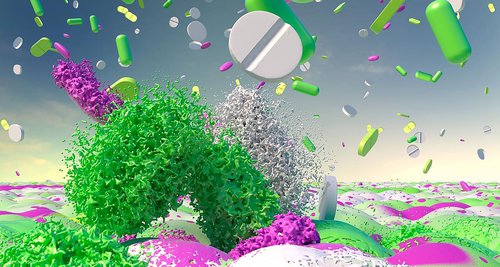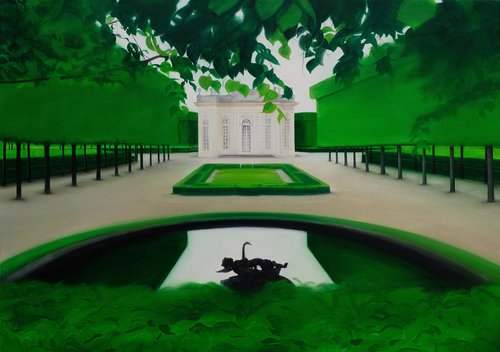Olga Tobreluts. Armageddon, 2022. Oil on canvas. Courtesy of the artist
Tobreluts Drapes Our Contemporary Tragedy in Classical Robes
At her current exhibition ‘New Mythology’ curated by Erkki Juhandi at the Estonian National Museum, Olga Tobreluts speaks of today’s horrors in the language of neo-classicism. For this Russian born artist living today in Hungary it is the culmination of three decades of work reimagining the spirit of academic painting.
In the early 1990s, Olga Tobreluts (b.1970) joined Timur Novikov’s circle, who in 1989 returned to the classical canons of beauty, then forgotten by contemporary culture, under the name of Neo-Academism. It became the dominant, post-modern movement in Petersburg art during the next decade. The New Academy, which Novikov established, included many of his friends from the New Artists group (the Russian equivalent of the German Neo-Expressionists, Neue Wilde), who had begun to paint nudes in the style of late 19th century academic painting and staged photography in the spirit of Wilhelm von Gloden. Besides Tobreluts, they included Georgy Guryanov (1961–2013), Bella Matveeva (b.1962), and the duo of Oleg Maslov (b. 1965) and Viktor Kuznetsov (b. 1960) who worked together until 2006. Olga Tobreluts, who studied computer graphics and animation at the Berlin Institute ART+COM from 1990 to 1992 later became a professor in the Department of New Technologies. Members of the ‘New Academy’ easily and willingly conferred titles and positions, parodying and mocking official art bureaucracy like true avant-gardists. After Novikov passed away in 2002, Neo-Academism itself gradually faded away, but has gone down as an epoch-defining phenomenon in the history of Russian contemporary art.
A celebrated and well-established artist today in her early fifties, in 2016 Tobreluts became an Honorary Academician of the Russian Academy of Arts. She now lives in Hungary and thanks to her Estonian roots she was invited to show her work at the Estonian National Museum, presented as a European artist in Tartu where her most recent work, a monumental painting called ‘Armageddon’ headlines a broader retrospective exhibition of her art.
The Estonian National Museum in Tartu opened in 2016 housed in a building designed by DGT Architects of France, whose project 'Field of Memory' was selected from 108 entries, and occupies the former runway in a military airfield. The museum, dedicated to the history of the Finno-Ugric world and its ethnographic themes, is recognised as one of the most up-to-date exhibition complexes in Europe and includes various exhibition spaces, including those designed for displaying contemporary art. When the artist first came to Tartu in connection with the exhibition, she found a manor house close to the museum where her paternal great-grandmother had lived as a child.
This exhibition is the artist's first major solo project since February 2022. The title ‘New Mythology’ has been used before for a retrospective at the Moscow Museum of Modern Art in 2013, and later in Ekaterinburg and Rome but the meaning and the list of works in 2023 is unrelated.
The focal point of the exhibition is the artist's latest work, a painting entitled Armageddon, which is equal in size to Picasso's Guernica at over 3 metres high and nearly 8 metres wide. This ten part large-scale canvas is executed with academic precision, and Tobreluts consistently recreates a grisaille effect in traditional oil painting technique. The composition combines quotations from Picasso's Guernica and Hendrik Goltzius's engraving ‘The Dragon Devouring Cadmus's Companions’ (1588), known for its bloody and horrific central scene. Behind all the pictorial elements are crystal structures, which the artist has used before in previous digital paintings, a pattern which builds up tension. Tobreluts was one of the first artists in Russia to appreciate the possibilities of digital painting for generating new images, long before the interest in neural networks became widespread.
The museum website quotes the artist’s sentiments about the current predicament: "When the tragedy of February 24th occurred, I realised that the paintings I had created were predictions of future events. During those months of horrific events unfolding in the Ukraine, I created Armageddon in ten parts. I wanted to have a dialogue with Picasso's ‘Guernica’ because I felt it was the closest to what was happening before my eyes at that moment in time. I also included in this dialogue figures that Hendrik Goltzius made in 1588. He made his drawings as a reaction to the destruction of the Spanish Armada at the Battle of Gravelines during a naval campaign against England. ‘Armageddon’ is like a figurative rebus, a coded text of the nightmare and horror that is currently taking place and how it will end.”
Armageddon is surrounded by works from other series by the artist, who has often pioneered new themes and techniques. For example, the works in her celebrated 2006 series ‘Models’ have long been part of a flow of popular images known by the public at large, and widely disseminated online. In 2009, Elmgreen & Dragset dressed the Torvaldsen statues in sportswear (a technique since adopted by advertisers, such as when in 2012 artist Leo Calliard gave the Louvre marbles fashionable outfits). Her 2005 series of photo-based works ‘Tarquinius and Lucretia’ looks like an unambiguous feminist statement. Her large canvas ‘Battle of the Naked’ painted in 2011, interprets a Renaissance subject by Antonio Pollaiolo: the men in Tobreluts’ painting are fighting huge dogs in the forest. Her 2002 triptych ‘Modernisation’ appears simultaneously with the first AES+F films and anticipates their work ‘Action Half-Life’ (2003–2005).
In the 1990s, Tobreluts worked with video. This exhibition features her 1993 film ‘On the Eve of War’, which uses discreet animation to animate Alexander Deineka's classic 30s ‘The Future Pilots’, an iconic work in the Stalinist grand style, full of ambiguous homoeroticism. Neo-Academism was often perceived as a version of gay art.
Tobreluts' exhibition and her new pictorial work proves the relevancy of aesthetic conventions and classical pictorial language today in unexpected ways. Neo-academism was once criticised for its closeness to a totalitarian aesthetic. In 2008, this was much discussed in Russian art circles following the Kandinsky Prize award to artist Alexey Belyaev-Gintovt (b. 1965), who was associated with the New Academy and espoused openly fascist views.
Following the outbreak of the military conflict in the Ukraine in 2022 and against the backdrop of the confrontation between democracy and totalitarianism openly taking place on the battlefield, many concepts previously touched upon in Olga Tobreluts' art have regained their true content, such as struggle, heroism, death, and external and internal tension expressed in the clash of these two forces.






